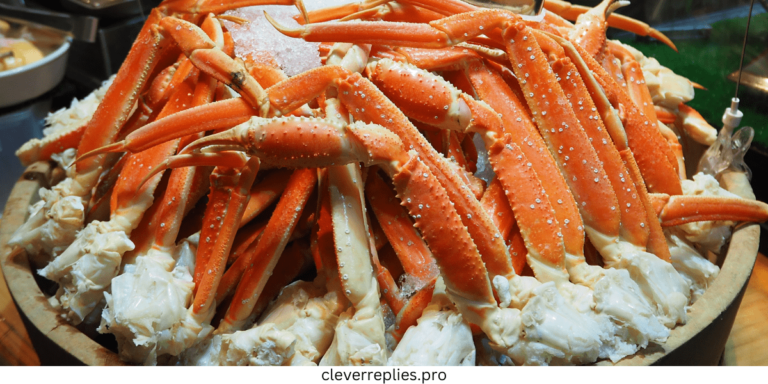How to Become a Successful Food Critic
Introduction
Have you ever savored a dish so exquisite that it made your taste buds dance? Or perhaps you’ve found yourself in a restaurant where the food was so disappointing, you wished you’d skipped dinner entirely. If these experiences resonate with you, becoming a food critic might just be your calling. The world of culinary arts is vast and vibrant, filled with flavors waiting to be explored and shared. As a food critic, you’ll have the opportunity to delve into this delicious realm while honing your skills in writing and tasting.
But it’s not just about writing glowing reviews or sharing scathing critiques; being an effective food critic involves mastering various skills, understanding different cuisines, and establishing credibility within the dining community. From building relationships with chefs to developing your own unique voice in print (or online), there’s much more than meets the eye when it comes to this delectable profession. Ready to dive deeper? Let’s explore what it takes to become a successful food critic!

Skills Needed to Become a Food Critic
To thrive as a food critic, you need a sharp palate. Being able to discern flavors and textures is essential. It’s not just about tasting; it’s about understanding what makes a dish work.
Writing skills are crucial too. You must convey your experience vividly, painting pictures with words that engage readers’ senses. A good review transports them right to the table.
Research plays an important role in this field as well. Familiarity with culinary techniques enhances your critiques. Knowing the background of various cuisines can add depth to your writing.
Adaptability is key. Food trends evolve quickly, and so should you. Keeping up with these changes ensures your reviews remain relevant and insightful for your audience.
Understanding Different Types of Cuisine
Exploring various cuisines is essential for any food critic. Each culture brings its own flavors, techniques, and traditions to the table. Whether it’s Italian pasta or Thai curry, understanding these nuances enriches your reviews.
Regional ingredients play a pivotal role in shaping dishes. For instance, fresh herbs are crucial in Mediterranean cooking while spices dominate Indian fare. This knowledge allows you to appreciate the artistry behind each meal.
Additionally, cooking methods vary widely across cuisines. Grilling is prevalent in some cultures while others might favor steaming or frying. Recognizing these styles helps critics evaluate meals more accurately.
Don’t forget about fusion cuisine—a blend of culinary traditions that can surprise your palate. Engaging with diverse foods not only broadens your perspective but also enhances your credibility as a food critic who truly understands global gastronomy.
Importance of Honesty and Objectivity in Food Criticism
Honesty and objectivity are the cornerstones of effective food criticism. Diners rely on critics to guide their culinary experiences, making it essential that opinions are grounded in truth.
When a critic approaches a meal, they must set aside personal biases. This detachment allows for fair assessments of flavors, presentations, and service quality. A dish may not resonate with one person but could be extraordinary for another; acknowledging this diversity is key.
Transparency about preferences fosters trust between critics and readers. If a reviewer has specific tastes or aversions, sharing those helps audiences understand the context behind their evaluations.
Moreover, honesty does not mean harshness. Constructive feedback can elevate dining establishments while remaining respectful to chefs’ hard work. Striking this balance creates an authentic narrative around food that benefits both consumers and restaurants alike.
Building a Strong Online Presence
A strong online presence is essential for any aspiring food critic. Your digital footprint can set you apart in a competitive field. Start by creating a professional website or blog to showcase your reviews, photography, and culinary insights.
Social media platforms are invaluable tools for connecting with fellow food lovers and industry professionals. Instagram is particularly powerful; beautiful images of dishes can draw attention and engagement. Use hashtags strategically to increase your visibility within the food community.
Engage actively with your audience through comments and direct messages. Sharing behind-the-scenes glimpses of dining experiences can create a personal connection that resonates deeply with followers.
Consider guest blogging on established foodie sites to gain credibility and reach wider audiences. Collaborating with other critics or influencers also enhances your exposure while enriching your content through diverse perspectives.
Networking and Establishing Relationships with Restaurants
Networking is essential for aspiring food critics. Building relationships with restaurant owners, chefs, and staff can open doors to exclusive tastings and behind-the-scenes experiences.
Attend local food events, tasting menus, or industry expos. Engaging in conversations at these gatherings helps you connect genuinely with key players in the culinary world.
Social media provides another avenue to reach out. Follow your favorite restaurants on platforms like Instagram and Twitter. Engage by liking their posts or commenting thoughtfully on their offerings.
Consider introducing yourself directly when dining out. A friendly conversation can leave a lasting impression that might lead to future collaborations.
Always maintain professionalism while being approachable. Each interaction is an opportunity to learn more about the craft of cooking and how it ties into effective criticism.
Remember that fostering these connections takes time, but they can significantly enhance your credibility as a food critic in the long run.
Developing Your Own Unique Voice and Style
Finding your unique voice is crucial in the world of food criticism. It’s what sets you apart from others and makes your reviews memorable. Start by reflecting on your personal experiences with food. What do you love? What excites you about dining?
Consider experimenting with different writing styles. Play with humor, vivid descriptions, or even poetic language to see what resonates best with you. The key is authenticity; write as if you’re sharing a meal with a close friend.
Engage all senses in your storytelling. Describe flavors, aromas, and textures vividly to transport readers right into the restaurant experience.
Don’t shy away from expressing opinions that are uniquely yours—even controversial ones can spark interest when backed by thoughtful reasoning. As you develop this distinctive style, remember that consistency will help build trust among your audience while allowing them to connect deeply with your culinary adventures.
Tips for Writing Effective and Compelling Reviews
When crafting a review, start with vivid descriptions. Paint a picture of the dish’s appearance, aroma, and texture. Engage your readers’ senses; let them almost taste what you experienced.
Use specific details to convey your thoughts. Instead of saying “the pasta was good,” describe its al dente perfection or how the sauce danced on your palate. Specifics create a stronger connection.
Be honest but constructive. Highlight both strengths and weaknesses without being harsh. Offer suggestions for improvement where necessary; this shows you care about elevating their craft.
Keep it personal yet relatable. Share anecdotes that reflect your experience while allowing readers to connect with your perspective.
Remember rhythm matters in writing too. Vary sentence length for flow and keep paragraphs short for easy reading online—this keeps audiences engaged throughout the piece.
Challenges Faced by Food Critics
Food critics often navigate a tricky landscape. One major challenge is the pressure to maintain credibility while balancing personal taste with public opinion. Critics must constantly ask themselves if their preferences align with what readers seek.
Another hurdle is the rise of social media influencers. With anyone able to share their dining experiences online, traditional food critics face stiff competition for attention and relevance.
Additionally, maintaining objectivity can be tough when emotions run high in the culinary world. Restaurants may react negatively to harsh reviews, leading to potential backlash or strained relationships.
Budget constraints also play a role; many critics operate within limited resources that affect how frequently they can dine out and write reviews. They must manage their time wisely between tasting new offerings and crafting articulate feedback.
Conclusion
Becoming a successful food critic is more than just tasting dishes and sharing opinions. It’s an art that combines knowledge, passion, and communication skills. By honing your craft and embracing the nuances of various cuisines, you can develop an insightful perspective that resonates with readers.
Building relationships within the culinary community enhances your credibility as a food critic. Remember to share honest feedback while maintaining objectivity in your reviews; this balance fosters trust with both restaurants and your audience.
Your unique voice will set you apart in a crowded field. Stay true to yourself while developing compelling narratives around each dining experience. Effective storytelling can elevate a simple review into an engaging read that captivates diners looking for their next meal.
While challenges may arise—be it criticism from peers or navigating restaurant politics—the rewards of sharing your culinary journey far outweigh them. As you embark on this flavorful adventure, keep savoring every moment and dish along the way. The world of gastronomy awaits those bold enough to explore it through their words.







